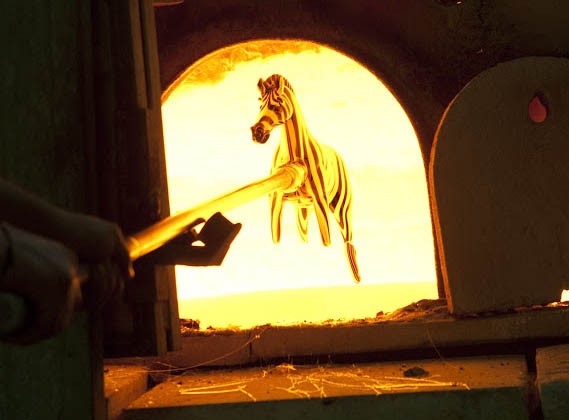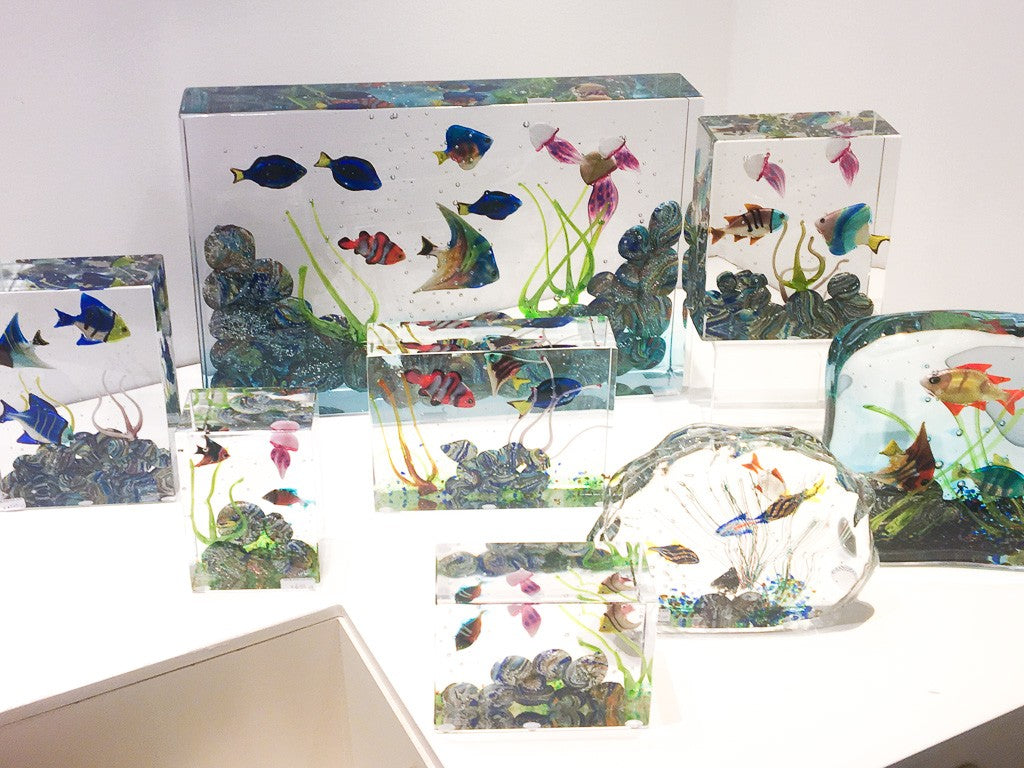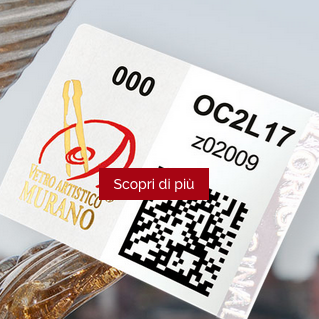The 10 things you should know before buying a Murano glass artwork
Murano glass is famous all over the world for its beauty and uniqueness .
It’s got an ancient heritage and it comes only from Murano island and Venice .
Even if imitation can be considered as a form of flattery, over time it has become a bigger and bigger source of frustration for Murano glass artists and enthusiasts alike. Unfortunately cheap copies are made with the attempt to gain more money from the less informed customers that are led to believe they’re actually buying a product that is valuable; instead what they end up with is a common object in glass, often mass-made in China, in Turkey, or Egypt.
And this is damaging the reputation of an entire industry.
How to recognize a genuine Murano glass product then?
We have prepared a list of 10 rules . Bring it with you on your next journey to Venice and let it help you choose the best souvenirs.
1. Each artwork is a one-off
Murano glass artworks are one-offs . Well, sort of.
The fact is, each product is hand-made , not mass-created with the use of moulds or the assembly line logic in mind. It’s pure craftsmanship that has an almost millenary history.
Each piece is slightly different from the other: a small variation in size or color is to be considered as a proof of craftsmanship.
Our tip: carefully observe the product you’re about to buy. Compare it to similar artworks: you will immediately acknowledge if it’s handmade or not noticing the presence of small variations.
Ok, some Muranese techniques require the use of moulds in the processing, but each final result is always slightly different from the other.
2. Use your hands and eyes
These directions apply only to mouth-blown objects, vases, glasses, goblets:
Since it’s handmade, Murano glass is lighter than its mass-produced counterparts and particularly the heavy Chinese glass used for counterfeits. This is particularly obvious when comparing glasses and goblets.
Remember to check for the pontil mark on the base of the product: mouth-blown glass will usually have it. This is where the glass blower has released the metal rod used to shape the glass. Therefore the base shouldn’t be completely smooth (if it hasn't been further processed to obtain a polished surface).
Remember that mass-produced glass comes in one thick layer. On the other hand, genuine Murano glass usually has several layers of crystal and colors.
3. Pay attention to prices
Murano glass reputation is based on its quality and its beautifully made decors and finishing: silver or gold leaves, calcedonio, zanfirico, avventurina, and so on.
All of this requires quality raw materials for the purest glass and great skills of the artist .
Add a stringent law for environment protection and security at the glass furnace.
This comes with a certain price .
If a product has a very low price compared to other similar ones (especially fashion jewellery, small gifts, souvenirs) then it is hardly made with Murano glass techniques, materials, and criteria.
4. Is it signed?
Usually – not always though – big artworks like sculptures, vases, or table lamps are signed with a diamond tip by the glassmaster (note that goblets, mirrors, chandeliers are not).
If the signature is missing, ask the seller why. A signed piece is significantly easier to resell in the future.
However, even relying on the signature alone does not keep us completely safe from potential scams, as the signature may have been added later by dishonest dealers.
It’s always a good idea to ask for some info about the artist, the studio, or the glass furnace of origin so to be able to verify the existence and compare online other works by the same maestro.
We have collected a good amount of authentic signatures on this post.
Every artist featured on our website MranoNet and on our shop - MuranoVitrum - are traceable.
5. Ask for a Certificate of Origin
Always ask for a certificate when buying an important piece. The certificate ought to indicate:
- the title of the artwork;
- the artist ;
- the name of the shop , its owner, VAT number, address;
- the techniques used for the artwork;
- a declaration of authenticity .
The Muranese Promovetro Consortium has created an official trademark issued by the Veneto Region, to protect glass made on the island of Murano: Vetro Artistico® Murano. Some Murano glass artists haven’t joined the consortium. Venetian glass artists aren’t included in the consortium. Read more at #7
Products bought at MuranoNet and MuranoVitrum (our shop in the heart of Venice) come with a declaration of authenticity, a “MuranoVitrum” label, and some even with the Vetro Artistico® Murano seal.

6. Ask for the techniques used
Another way to understand if a product has been actually made in Murano is asking about the techniques used. A trustworthy reseller always knows them and can help you understand the piece and the art of Murano better.
For the Murano glass techniques, visit our glossary.
7. Murano Glass or Vetro Artistico® Murano?
Since Murano is not a brand but an origin (the island of Murano) it’s easy to understand the difficulty encountered in trying to protect it from forgery.
On the island of Murano there are circa 100 glass manufacturers, from small independent artisans to big studios with 50 employees. Many are devoted to artworks of high quality, others create simple souvenirs.
The Promovetro Consoritum - with the Vetro Artistico® Murano trademark and guarantee label – certifies that every part of the product comes and has been hand-made in Murano .
Some Muranese artists prefer to stay independent .
Artists based in Venice can’t join the Consortium . That does not imply their products are mediocre or not made following the ancient Murano glass techniques.
8. Buy only by Certified Shops

Saty with reputable suppliers . This gives you a guarantee that the work is genuine.
How do you recognize a certified shop ? They are listed by the Promovetro Consortium.
Visit the page muranoglass.com/en/negozi for more.
MuranoNet and its shop in Venice, MuranoVitrum, are listed as reseller number V07 .
9. Check for Feedback
Surf the web looking for feedback on the reseller and the artwork.
A good start is the reseller’s Facebook profile . Other services include websites such as TripAdvisior ar Yelp.
For example here's our Facebook Page: www.facebook.com/MuranoNet
10. When buying online...
If you’re buying from an online shop, choose specialised and trustworthy websites only :
- they should use https for secure navigation;
- is there someone behind it? Try with an email to the customer care or see their Facebook Page;
- what does the home page look like? Abandoned and old-style or fresh and regularly updated?
Ask for written warranties and the name of the manufacturer if not indicated . “Murano”, “Murano style”, “Murano like” alone does not mean anything.
Websites selling Murano glass from China are scammers.
If there are no credentials or you’ve got any suspicions, feel free to contact the Promovetro Consortium promovetro.com or muranoglass.com For an opinion.
For example, we have a long history in the glass industry, dating back in 1950. Read more:
/pages/about-us
That’s why we have created this Complete Guide to Murano glass, hoping you’ll find it useful.






1 comment
Linda
Does Murano glass have a shiny bottom or dull?
Thank you
Linda
Leave a comment
All comments are moderated before being published.
This site is protected by hCaptcha and the hCaptcha Privacy Policy and Terms of Service apply.